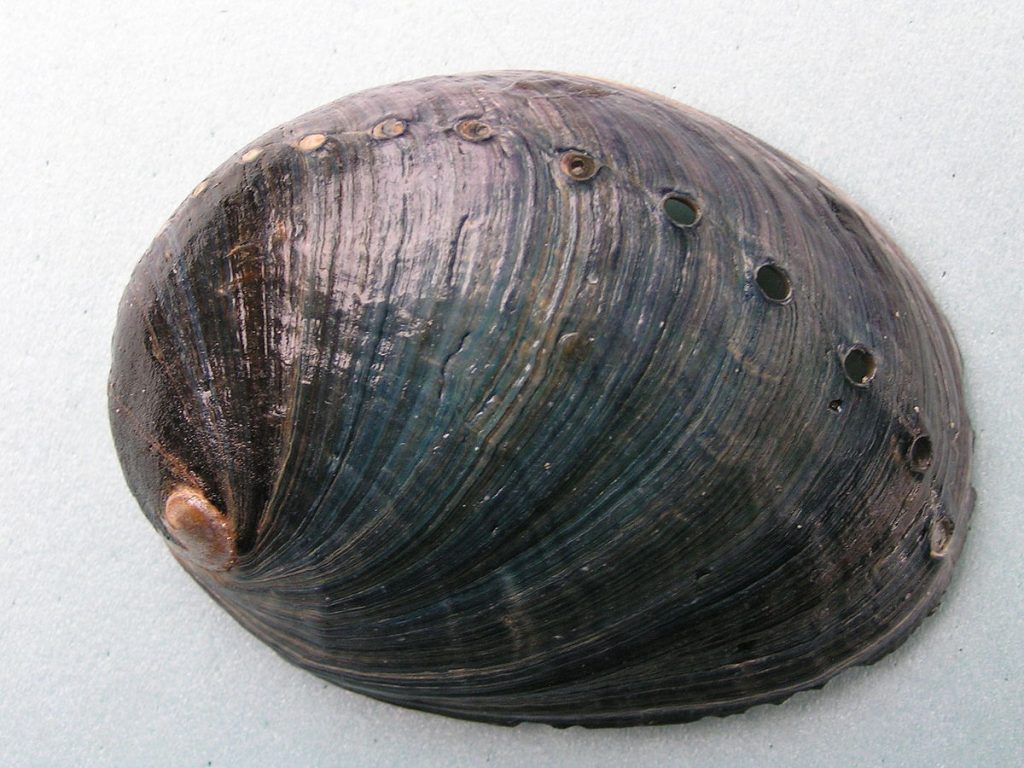
STATUS
Federal status: Endangered
POPULATION TREND
(+) Increasing
RESTORATION
Intermediate
FAMILY
Haliotidae
RANGE
Point Arena, California to Bahia Tortugas, Mexico
Appearance
Black abalone are marine snails, with a shell and large muscular foot used to move around and adhere to rocky surfaces. The dark black, brown, green, blue shell can grow to 20 cm long.
Habitat & Behavior
Black abalone occur in rocky intertidal habitats, or the area where the ocean meets the land in between high and low tides. They can be found from the upper intertidal zone to depths of 6 meters, if there are enough complex surfaces and deep crevices that provide shelter. These sheltered areas are needed for juvenile recruitment and adult survival. Black abalone can live up to 30 years.
Threats
Increased water temperatures can pose a risk to black abalone by reducing the quantity and quality of food resources (algae) and increasing disease-related mortality. These higher temperatures can result from point sources (e.g. power plant facilities, urban runoff) as well as climate change (e.g. global climate change, El Niño-Southern Oscillations). Withering syndrome disease, which may be related to increased water temperatures, has caused declines of more than 80% in populations throughout southern California.
Conservation
The Black Abalone Recovery Team (BART) is comprised of research biologists and resource managers representing several agencies and institutions. They recommend the control of illegal harvesting and poaching, and the mitigation of potential introductions of pathogens and invasive species.
Where can you spot it?
In Los Angeles, black abalone may be observed at the Palos Verdes Peninsula, particularly in tide pools during extreme low tides.